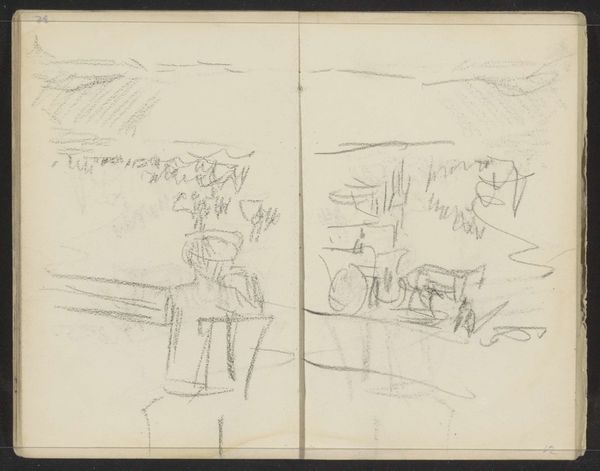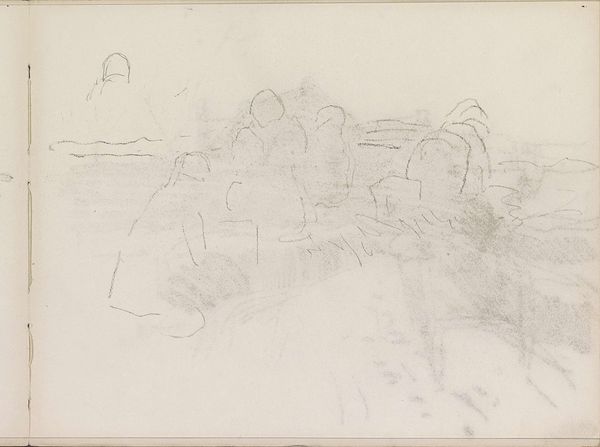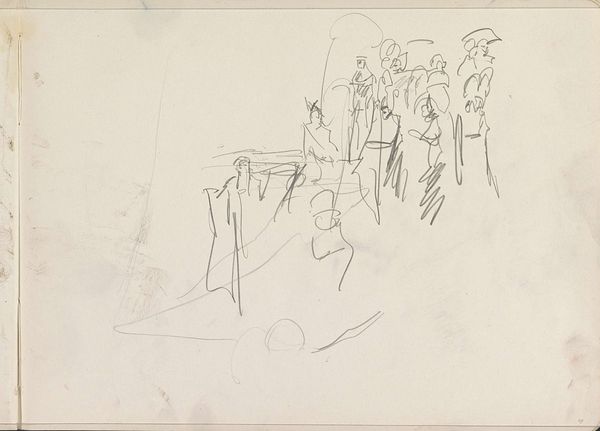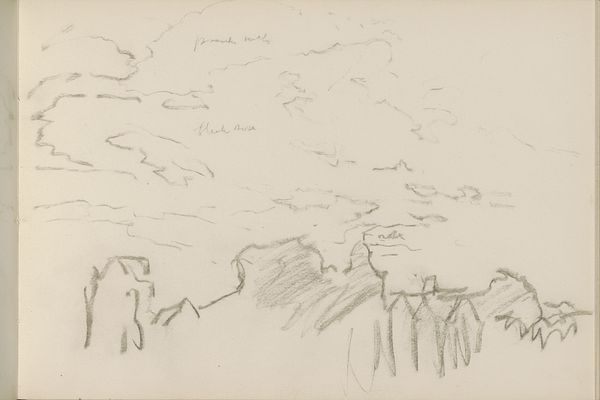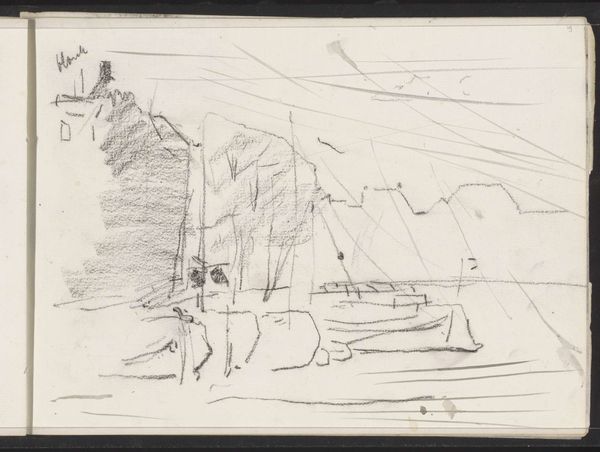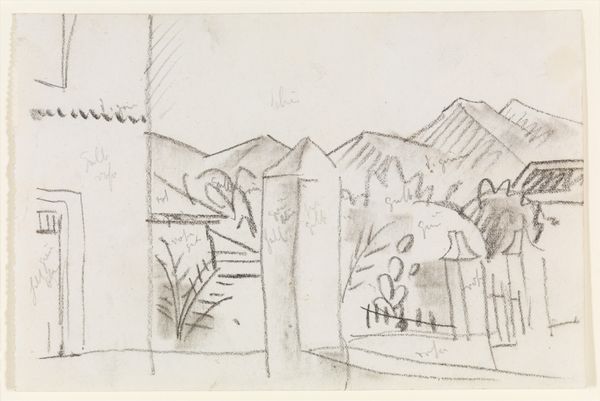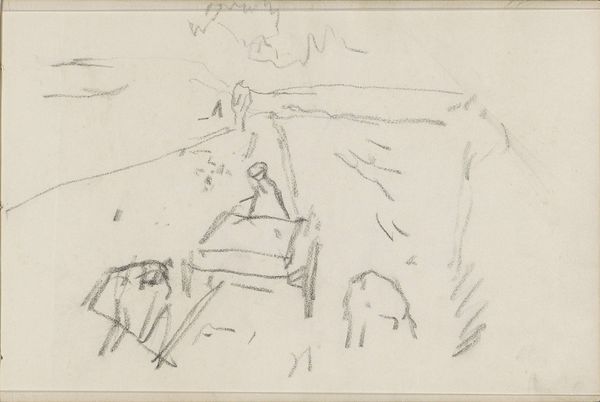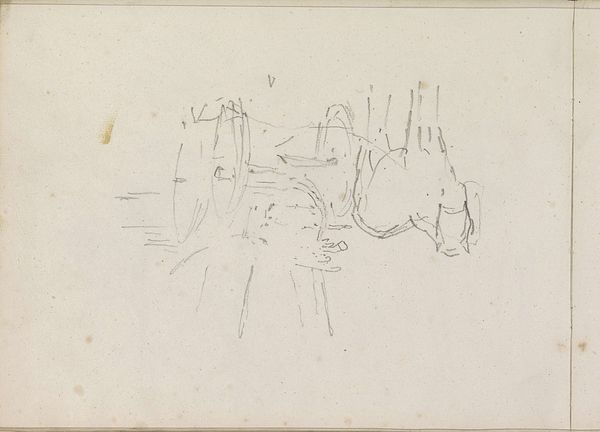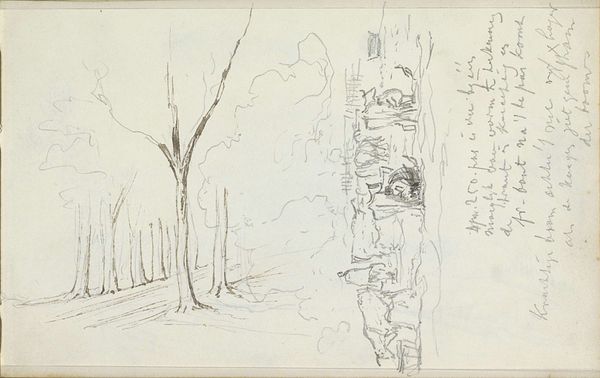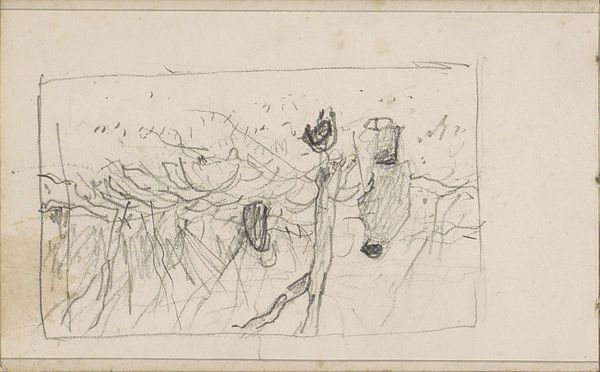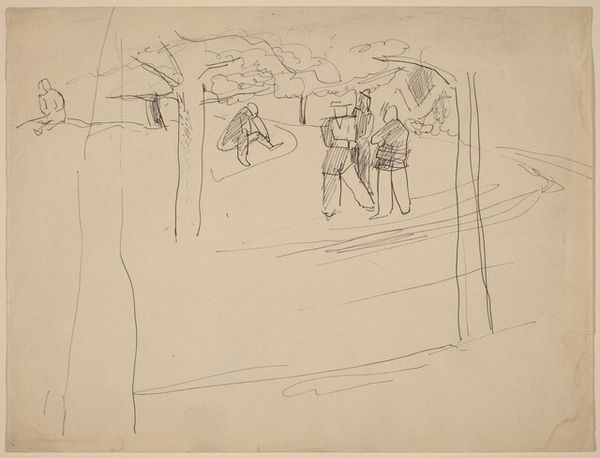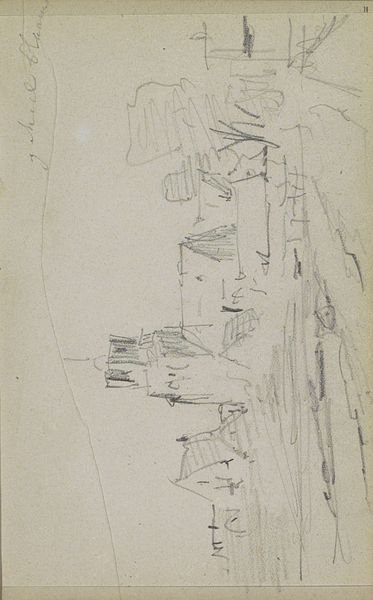
drawing, pencil
#
drawing
#
impressionism
#
landscape
#
pencil
#
realism
Copyright: Rijks Museum: Open Domain
Editor: Here we have "Herder met een schaapskudde," or "Shepherd with a Flock of Sheep," a pencil drawing by Anton Mauve, dating from around 1886 to 1888. The scene feels fleeting, like a quick impression captured in graphite. What's your take on this piece? Curator: The materiality of this drawing, the rough paper, the very visible pencil strokes, emphasizes the labour inherent in art making. Mauve’s choice of a humble subject matter – a shepherd and his sheep – elevates the everyday and invites us to consider the working-class experience. Editor: That’s interesting. I was just thinking about it as a peaceful rural scene. Curator: Precisely! But whose peace are we observing? Think about the societal context. During this time, increased industrialization altered both labor and rural life, prompting artists like Mauve to examine such social changes in artistic practice. The impressionistic style obscures crisp details, suggesting both beauty and labor exploitation. Editor: How so? Curator: Notice how he represents sheep not as distinct individuals, but as a uniform mass, alluding to production practices of his day. His loose sketching technique hints at fast and mass produced images of the day. Editor: That is a perspective I hadn’t considered! So you're saying that Mauve's choice of medium, his technique, and subject is deliberately addressing the socioeconomic shifts of his time? Curator: Absolutely. The “art” is not simply what's depicted, but what materials were used and how they are deliberately engaged in social issues beyond pastoral calm. Editor: Fascinating! I'll definitely look at art through a different lens now. Curator: Remember to consider who made it, how they made it, and why they made it within the network of material exchanges.
Comments
No comments
Be the first to comment and join the conversation on the ultimate creative platform.
